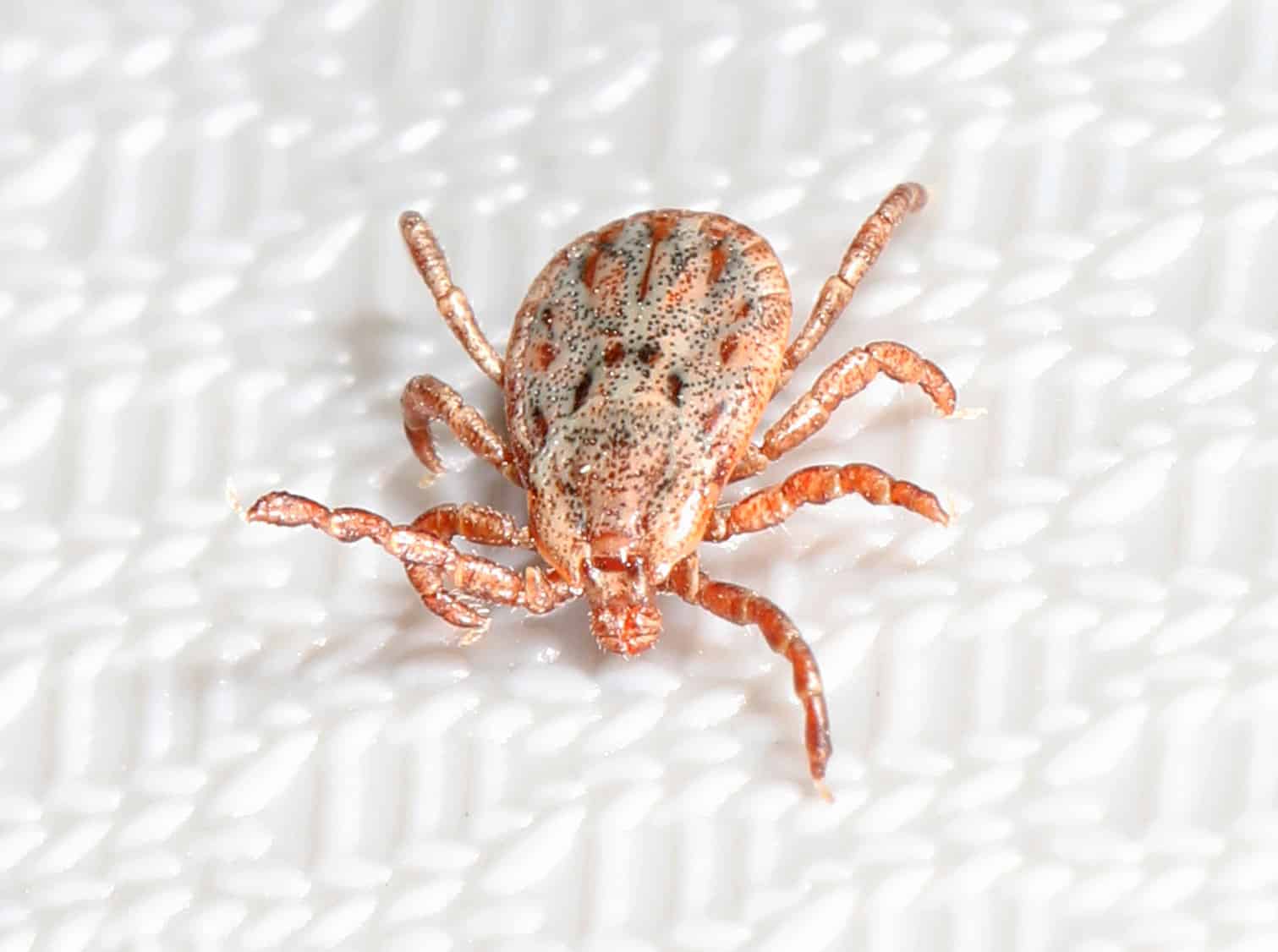Ticks (order Ixodida) are parasitic arachnids of the superorder Parasitiformes. Depending on factors such as species, and “fullness,” an adult tick’s length can range from about 3 mm to 5 mm. Ticks feed on the blood of mammals, birds, and even reptiles and amphibians. Many people are curious about the global tick population in light of the recent increase in reported instances of Lyme disease. This article aims to answer that question!
How Many Ticks Are In The World?
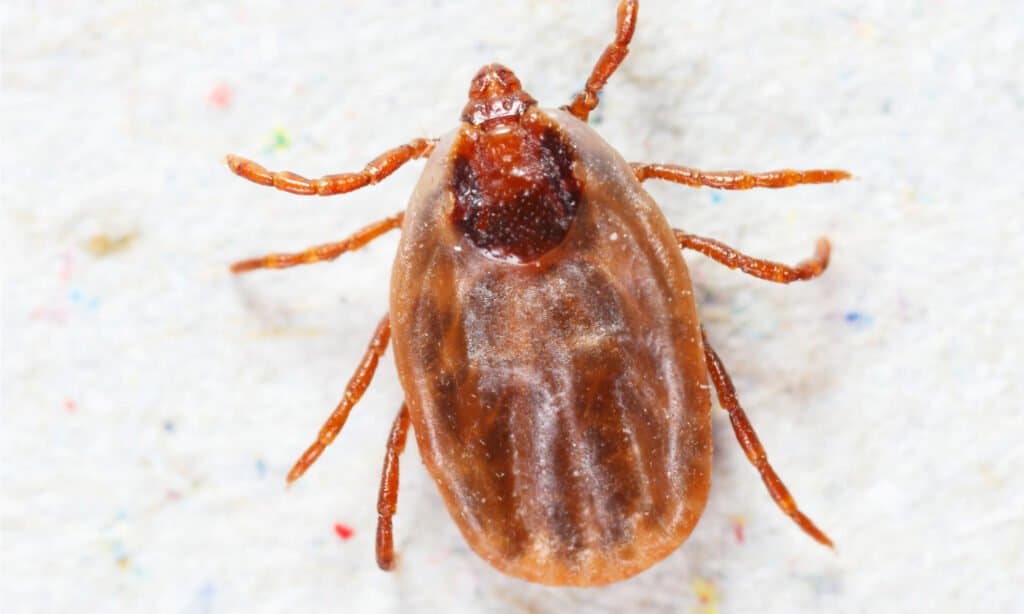
Ticks can spread diseases.
©7th Son Studio/Shutterstock.com
Over 90 tick species are widespread across the United States, out of an estimated 850 worldwide. According to the CDC, the annual number of new cases of Lyme disease in the United States is rapidly approaching half a million. This means there are probably millions, if not billions, of ticks dispersed around the planet, the vast majority of which are completely harmless.
Ticks are now prevalent in every region of the world. Ticks are ubiquitous, but not all ticks are the same. Different tick species may spread different diseases in different regions. Each state has its own unique tick species and population size. This is due to elements including climate, topography, and tick biology that makes for unique challenges.
Why Do We Have So Many Ticks Here in the U.S.?
Tick habitat is likely expanding as a result of climate change for a number of tick species. This increases the overall tick population. Unlike mammals and birds, ticks’ bodies don’t stay at a constant temperature.
Ticks favor cool, damp environments and tend to congregate near the ground. They prefer to perch on low-lying vegetation like grass and shrubs, where they may easily launch themselves at their next victim. Ticks can be found in your yard, garden, and in wooded areas bordering your property.
Are Ticks Harmful?
Only a small percentage of the various tick population species around the world actually bite and spread disease-causing bacteria, viruses, and parasites. Ticks that feed on humans come in many species, each transmitting its own unique bacteria and viruses.
Five, in particular, should be avoided at all costs. These species may look or live in various parts of the country, but they all carry the same dangers. It is crucial to one’s health and safety to be informed of the dangers presented by each tick species, especially the ticks found in one’s state.
The 5 Most Dangerous Ticks In The U.S.
Blacklegged Tick

Blacklegged tick
©daksel/Shutterstock.com
Known for its nasty bite, the black-legged (deer) tick gets its name from the color of its legs. Blacklegged ticks get their common name, “deer ticks,” from their preference for making white-tailed deer their adult host. In addition to transmitting Lyme disease, anaplasmosis, human babesiosis, and Powassan encephalitis, this tick is of medical significance for other reasons as well.
From Florida to Maine, and even as far west as Texas, these ticks cover the whole eastern coastline of the United States.
American Dog Tick
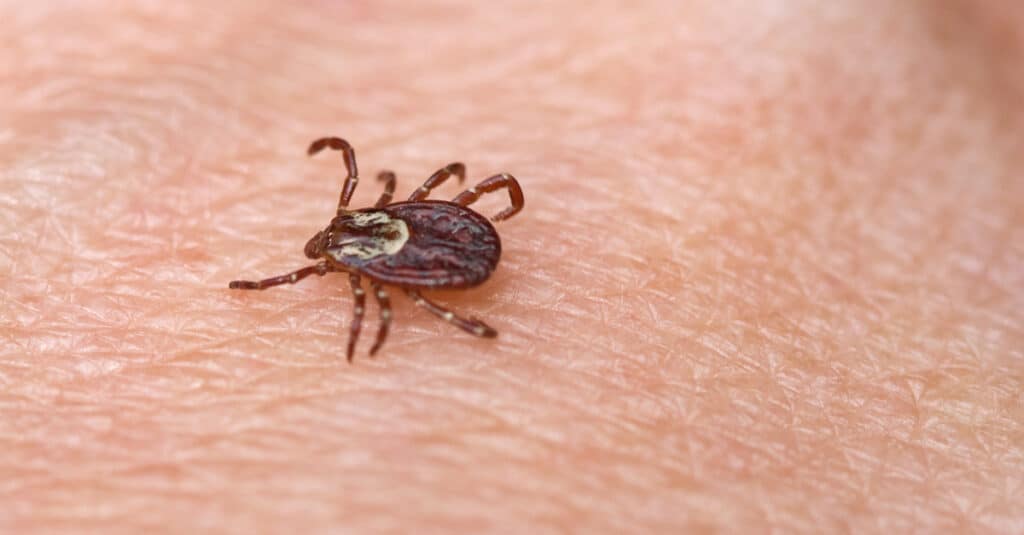
American Dog Tick (
Dermacentor variabilis) on human skin.
©Melinda Fawver/Shutterstock.com
The American dog tick, also called the wood tick, is so-called because these adult ticks prefer feeding on domestic dogs. In addition, this tick species is found only in North America. When they feed on a host, American dog ticks can transmit germs that lead to illnesses like Rocky Mountain spotted fever in people.
This tick is predominantly east of the Rocky Mountains and in various Pacific coastal regions of the United States.
Brown Dog Tick
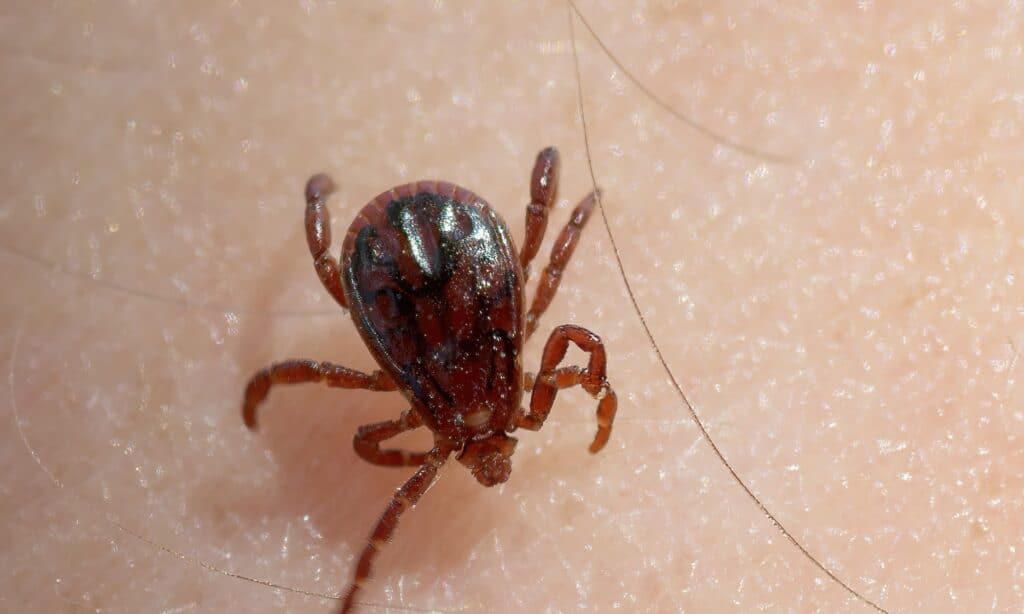
Close-up of a brown dog tick crawling on human skin.
©iStock.com/RobertAx
The brown dog tick is so-called due to its characteristic reddish brown hue and its widespread distribution on canine pets. This species rarely bites humans, even though it is most likely to meet them in enclosed spaces like homes and kennels.
Florida and the southeastern United States are the most common locations for this species.
Lone Star Tick
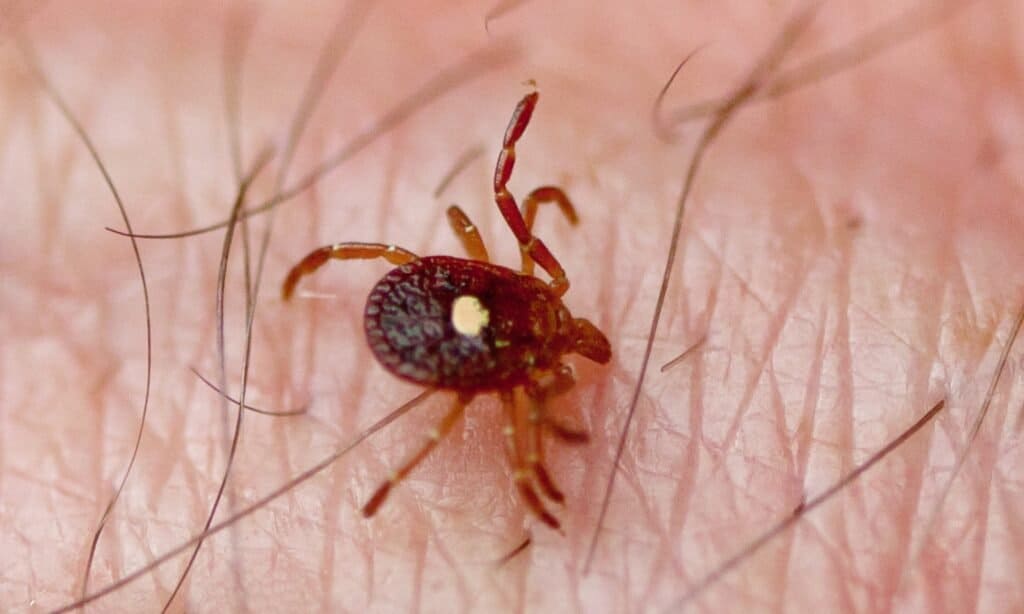
Lone Star Tick (
Amblyomma americanum)on human skin. This tick looks like a tiny crab, with a round, fat body, eight short legs, and a hard shell.
©iStock.com/epantha
The female lone star tick has a single silvery-white spot on her back. This is where the tick takes its common name. In the southeastern and eastern United States, these ticks bite humans more often than any other tick species. Lone star ticks can spread infections, and their bites can sometimes cause a circular rash.
The southern portions of Iowa, Illinois, Indiana, Ohio, and Pennsylvania as well as Texas are the most common locations for this.
Rocky Mountain Wood Tick
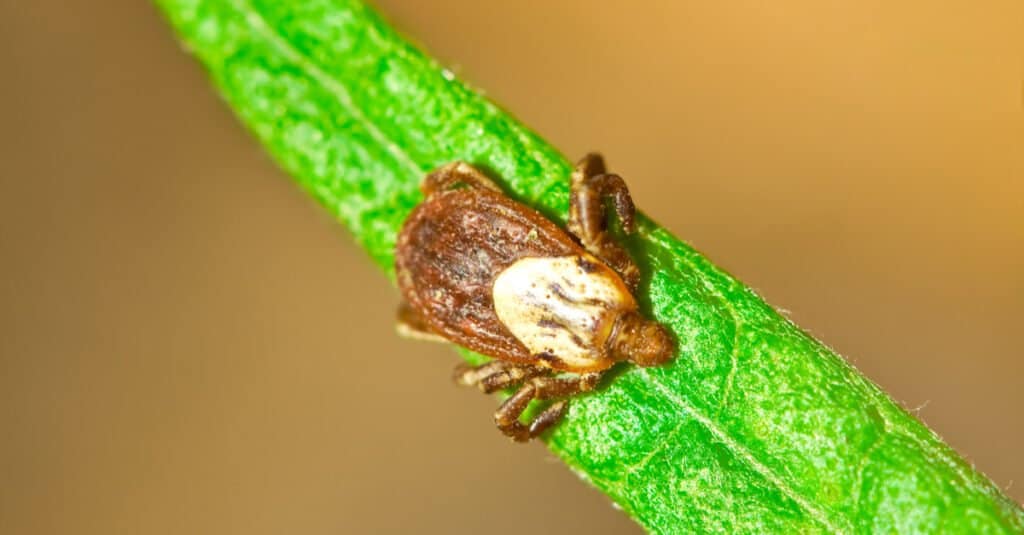
Rocky Mountain Wood Tick,
Dermacentor andersoni, on a blade of grass.
©South12th Photography/Shutterstock.com
The Rocky Mountain wood tick receives its name because it is most commonly seen in states in the Rocky Mountain region. Tularemia, tick paralysis, and Rocky Mountain spotted fever are all diseases that can be transmitted by the Rocky Mountain wood tick.
Common areas for these ticks include the states of Colorado, Idaho, and Montana.
Do Ticks Do Any Good for the Planet?
Chickens, turkeys, and other ground birds like a diet rich in ticks. Ticks are an essential part of the food chain because they transmit nutrients from higher on the food chain, provided by their host animals, to lower on the food chain, where they are consumed.
Thank you for reading! Have some feedback for us? Contact the AZ Animals editorial team.

